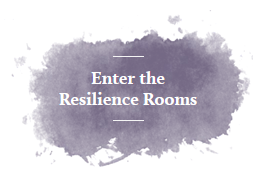With holidays and a new year approaching, we have moments to contemplate how we want to move forward and approach our lives. We always have choices; even inaction is an action taken. Self-affirming mantras help to center and ground us so that we’re pausing, contemplating, and strategizing with mindful awareness, thus fortifying joy and contentment.
The concept of a mantra originates from Buddhist and Hindu traditions. A number of studies suggest that soothing mantras may help ease anxiety and other mental health conditions, such as depression. We can choose personal mantras that we can personally relate to, is consistent with our beliefs, and those that compel us toward growth and progress.
Why Are Mantras Helpful
You may use mantras to introduce calmness and to focus on words and ideas that are important to you. It can serve as a focal point for mindfulness and present moment awareness and a pathway for soothing affirming messages that can connect you to your values. A mantra can also empower value-based decision making and can bring you a sense of emotional connection to your mind and body.
Several studies suggest that mantras may improve health and mental health. A systematic review found general improvements in stress, anxiety, anger, depression, and burnout among participants in 37 studies. Another randomized controlled trial found clinically relevant reductions in depression symptoms.
Neuroscientists, equipped with advanced brain-imaging technology are also beginning to quantify and confirm some of the health benefits of reciting mantras to calm the nervous system and reduce the default mode network in the brain which is related to mind wandering and distraction. Research also suggests that it doesn’t matter what you specifically recite—as long as you repeat something with focused attention, you’ll get positive results. Below are examples of mantras to reset your mindset.
16 Mantras to Reset Your Mindset
1. When I’m willing to welcome, accept and befriend negative and uncomfortable emotions, validate myself, and engage in self compassion, I commit to making room for growth and expansion.
2. I do not have control over my thoughts and feelings, only the way in which I choose to behave or react to them.
3. My brain is hardwired to focus on the negative. I can more easily recall memories of my pain than my joy both cognitively, in my mind and somatically, in my body. My reptilian brain tells me that if I focus on the negative, the what ifs, and what could inevitably-go-wrongs, then I’m protecting myself from harm, failure, and discomfort. My thinking processes does not need to skew my inner experiences and behavior.
4. My mind is persistent. I cannot necessarily rid myself of the chatter in my mind but rather just lower the volume. The chatter can become a direct portal to my values and better understanding of what is meaningful and important to me.
5. To increase my flexibility and curiosity, I’ll perpetually ask myself “How else can I see this?” and “Is my reaction and behavior helping me to lean toward or away from building my confidence and a reflection of who I want to be?”
6. I feel more comfortable with familiarity than the frightening unknown, even if it’s painful, distressing and less than ideal. I’ll acknowledge these feelings rather than react from them from a place of stuckness, stagnation or fear.
7. Creating space between the thinking and doing requires that I pace myself, observe myself, and remain curious about myself. All thoughts and feelings that show up in the process are okay. What matters most is how I choose to react to them. This inevitably is my choice.
8. In my pain I find my values, and in my values, I find my pain. In other words, if I’m feeling distress, it’s because a value is being rubbed up against and if a value is being rubbed up against, I will inevitably feel distress. My distress assists me to better understand my needs and what’s truly important to me.
9. I will choose to behave based on who I authentically am and how I want to be, no matter what, irrespective of someone else’s behavior.
10. If I commit to perpetual curiosity, openness, and hopefulness I ask myself, “How will I do better tomorrow and what will I commit to doing to make that happen?”
11. If I continually stay connected to my values, I’ll remain mindful, grounded and behaving based on my best self.
12. Cutting off my negative or uncomfortable feelings inadvertently also impacts my ability to connect with my positive and more comfortable ones. I choose to welcome all feelings and experiences and minimize my judgments of them in order to stay connected, engaged and in the present moment.
13. To foster self-acceptance, I will observe myself just as I am without attaching any descriptors or adjectives to my observations.
14. What I put positive (e.g., gratitude) or negative (e.g., anger) energy and effort into grows stronger over time. All moments are prime opportunities for me to be proactive in cultivating greater confidence and helpful habits.
15. By being accepting and compassionate towards myself, I can more easily give others the same benefit of the doubt as I am able to connect with what it feels like to be imperfect, and to suffer as well.
16. There are so many things that I can’t control so, sometimes, in order to gain control, I must let go of the need for wanting or needing to control.
As humans, we all experience adversity. How we react to the adversity will vary depending on our situation, experience and values. Through powerful, memorable, and concise mantras, you will be continually reminded that through your adversity and challenge, you can find your joy, strength and fortitude.
Listen here for a Strength, Power and Resilience Guided Meditation led by me.
Please subscribe to my YouTube channel for more interviews and guided meditations.
Blog as published in Psychology Today.



